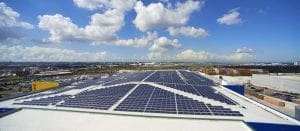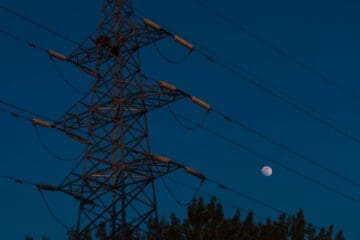A Deep Dive into Solar Installation Equipment Oversizing and what it Means for the Customer
Matching solar array output to inverter input (DC/AC ratio) is a critical step in PV system
design. The primary goal of matching an array size to inverter capacity is to ensure that the inverter can capture a high percentage of the annual available energy at the site (taking environmental and ambient weather conditions into account). The traditional DC/AC ratio is 120% – 135%, new inverters can manage 150% array power output (kW DC) than their nameplate rating (AC kW). Oversizing a PV array will increase the cost of the system overall since you are purchasing more PV modules and array racking. However, since this can be
achieved without necessarily increasing the grid interconnection costs and AC system components, the increased annual energy production is achieved with a lower price per Watt installed costs. A simulation comparison shows that by oversizing a PV array, the annual yield of a system can be increased by over 28% for only 10% increase in the total costs of installation, giving the customer a bigger bang for their buck by investing in increased production for their on-site solar facility.
If you are in a service area that is AC-limited due to transformer size and interconnection constrains, you pay excessive demand charges, you can produce the maximum allowable production during the peak time. By oversizing a PV array, the inverter can reach its rated AC capacity earlier in the day and continue operating at that level until late in the afternoon as shown in the following graph. In such cases, oversizing a PV array could reduce the energy costs of a business with greater certainty, especially given the low price of PV modules in today’s market.
Red curve shows the consumption (load) while green chart shows the solar production on April 26, 2021. A 333 kW AC inverter combination with a 450 kW DC (oversized) PV array
To maximize the system production capacity during low irradiance period lower – winter, morning, evening, etc. a system oversizing is recommended.
The addition of energy storage to a PV installation allows you further to capture additional revenues. Traditional storage plus solar applications have involved the coupling of independent storage and PV inverters at an AC bus or the use of multi-input hybrid inverters. An alternative approach – coupling energy storage to PV arrays with a DC-to-DC converter (DC-coupled solar plus storage)– can help to increase further the array size and profits for solar contribution regardless of interconnection restrictions. In this scenario, the inverter size is limited by interconnection requirements, but the array size is independent from the inverter rating. The solar array charges batteries first before exporting any additional generated electricity to the grid through the inverter. Therefore, in these scenarios, the array size can be up to 3-4 times larger than the installed inverter capacity. In an effort to achieve a grid independence and interconnection limitation installation of a large solar array and battery banks are becoming more attractive.
Read Also:
The author of this blog post, Fariborz Mahjouri, is a Professional Engineer and CEO of Aurora Energy. He has been in the solar industry for 28 years and has been a part of the rapid growth of the PV market since the beginning







